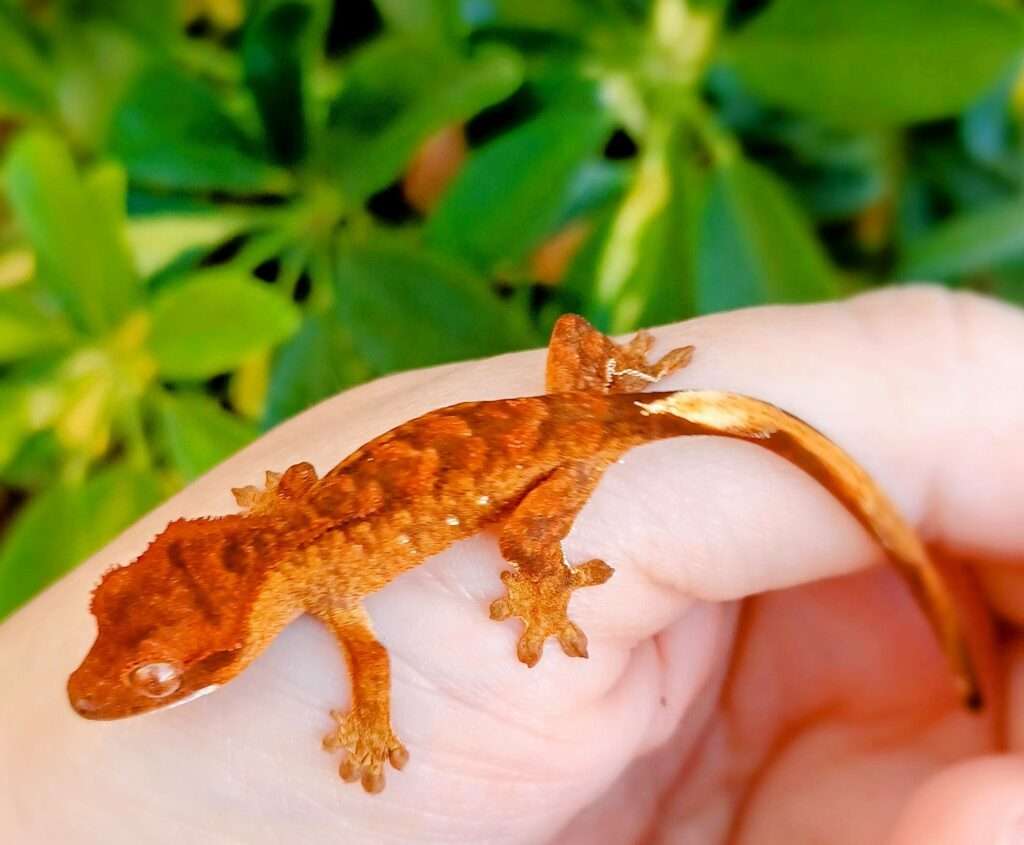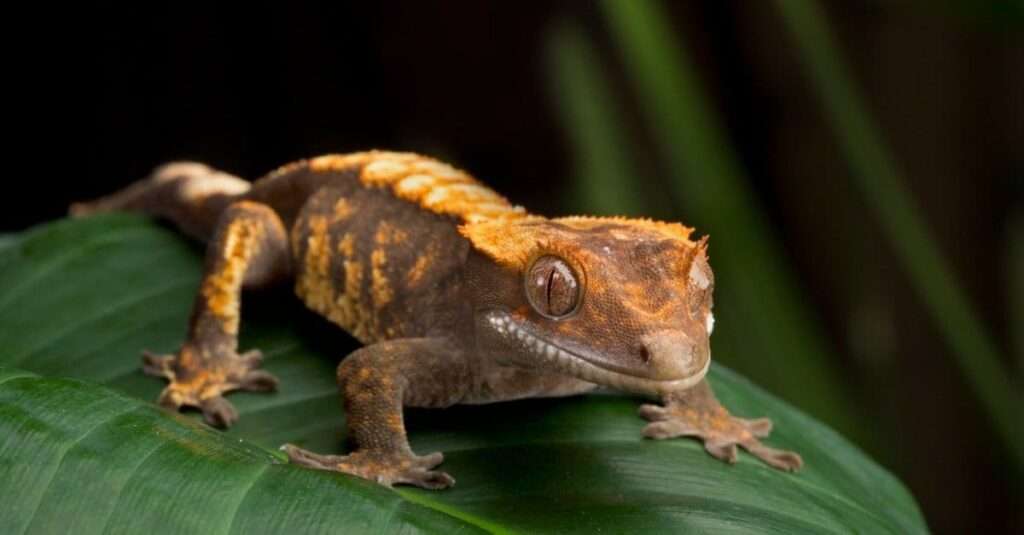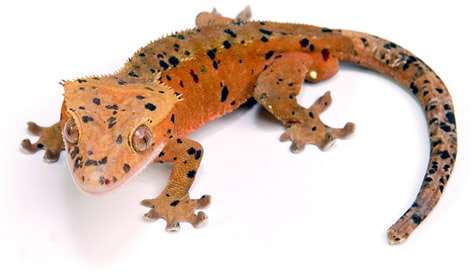
Description:
Scientific name: Correlophus ciliatus
Life span: 15 years
Dual-colored flame crested geckos can be seen. They have two colors: a base color that makes up the majority of their coloration and a second, contrasting color that contrasts with the base color but is much lighter. There won’t be much to no patterning on the limbs or sides, but you might see some on the top of the lizard.
Native Region/Habitat
The crested gecko is exclusive to New Caledonia’s South Province. There are three distinct populations: one that can be found on the Isle of Pines and nearby islets, and two that can be found on Grande Terre’s main island.
Behavior:
Although they can be a little timid and need to be handled carefully, crested geckos often have calm dispositions. Avoid handling them if you can because they typically dislike it. They might attempt to jump off of you, which could hurt them.
Crested geckos can jump quite effectively because they are a solitary, primarily arboreal species that prefers to live in the canopy of the New Caledonian rainforests. Since they spend much of their time sleeping at night, they usually spend the daytime in safe places in tall branches. When threatened or calling for a mate, crested geckos use barks and squeaks to communicate with one another.
Care As a pet/In captivity:

Habitat, Tank Conditions & Setup: Creating an environment for your flame crested gecko is the most challenging aspect of care. Prior to buying your gecko, each of the following needs to be taken into account. It will be easy to take care of your gecko after everything is set up.
Tank: For one flaming crested gecko, you’ll need a tank with at least 20 gallons of space. Due to their arboreal nature, crested geckos thrive in tall enclosures stocked with trees and other climbable objects. To prevent contamination, make sure to sanitize everything before adding it to the tank. The tank must also be cleaned and sanitized once a week with a bleach solution. It will be necessary to transfer the gecko to another tank for cleaning.
Heating (Temperature & Humidity): The best approach to keep the tank of your gecko warm is with a heat emitter bulb. The cage must have thermometers installed in it so that you can keep track of temperatures. Being ectothermic, geckos require a temperature gradient in their habitat in order to maintain their body temperature. The heated side of the tank must be around 80 degrees, while the cold side should be around 72. During the night, the temperature can go as low as 65.
Crested geckos require high humidity levels to survive. A minimum of 50% humidity is required, however most crested geckos thrive at higher humidity levels of about 70%.
Feeding: The omnivorous flame crested geckos eat both fruit and insects. Nonetheless, utilizing commercial crested gecko food is the best option for the majority of crested geckos. Even while you should still give your crested gecko insects and fruit in addition to the food, a commercial meal solution will give it all the nourishment it needs.
Offer insects twice or three times per week. Utilize tiny insects that are no bigger than your gecko’s eye distance apart. The most common feeding insects for crested geckos are crickets and roaches. You should also give your gecko fruits two or three times per week. Fruits including apricots, bananas, pears, peaches, and mangoes are acceptable.
Table





